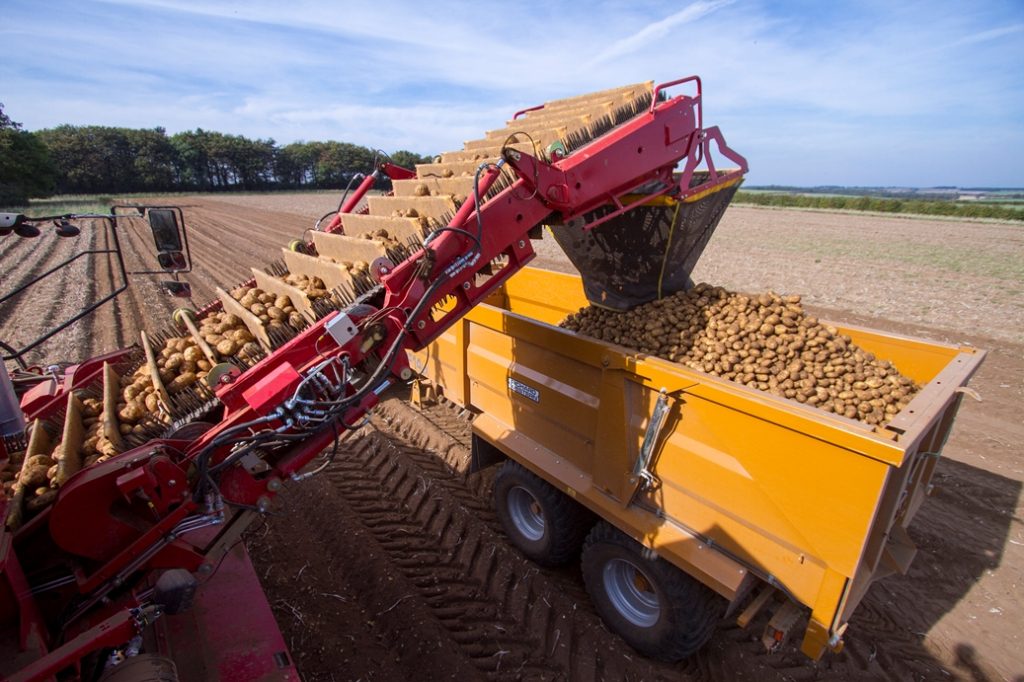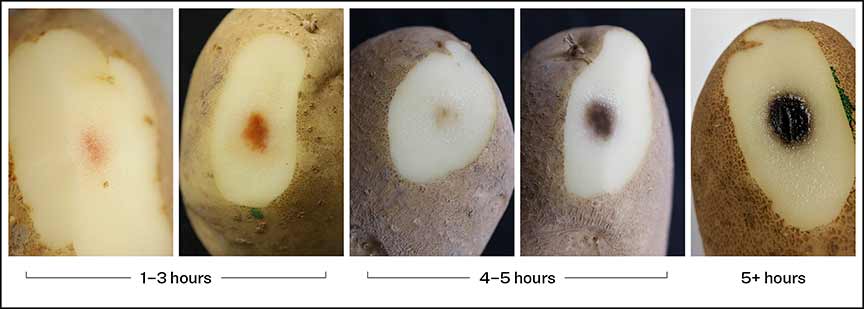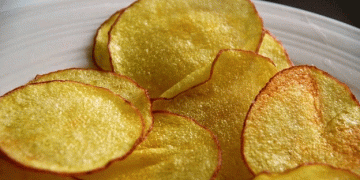Blackspot bruising is a quality concern no matter what market of the industry a potato is destined. A blackspot bruise occurs when a tuber is impacted by an external force. This force may not break the skin, but instead damages the cells underneath. Blackspot bruise is formed when the damaged cells’ phenolic compounds are oxidized by the enzyme polyphenol oxidase (PPO), which in turn produces quinones (pink color), and then transforms into dark pigments (melanin). After the potato is peeled, the damaged cells appear as a dark or black spot.

Development of the blackened area is not immediate and takes time to visually appear. The darkening is irreversible and considered a defect both for fresh and processing potatoes. An impact is needed to cause a blackspot bruise to form. Ideally, the sooner you are aware of conditions or equipment causing an impact, the sooner you can make changes or adjustments to reduce the potential for blackspot bruising. Peeling potatoes to identify the proportion with blackspot bruise symptoms can be a great tool to identify areas to adjust for bruise control.
Simply sample potatoes at various locations at harvest, handling in and out of storage, or after packing or transport. A general rule of thumb is to hold potatoes at 70F for 24- 48 hours and then rate for blackspot bruise. Shorter periods of time (6-12 hours) at higher temperatures of 80-90F have been used to speed up blackspot bruise development for earlier detection. These recommendations were based upon the time and temperature needed for maximum blackspot discoloration.
The question remains, can you get a fairly good idea of blackspot bruise level (eg. less than maximum coloration) in a shorter amount of time to make equipment or handling modifications sooner?
A recent study by the University of Idaho set out to determine if you can evaluate bruises sooner than 24 hours and without using high temperatures. The main objective was to address the development of blackspot bruise over a 5 hour period and compare to bruise development after 24-hour in Russet Burbank and Russet Norkotah. An impact pendulum was set at a drop height of 7 or 12 inches and delivered 4 uniform bruises on each potato.

Tubers were bruised, placed at 70⁰ F (eg. room temperature), and then visually evaluated for blackspot bruise at 1, 2, 3, 4, 5, and 24 hours after impact. Discoloration, primarily pink coloration, began to develop within the first hour after impact. For example, Russet Burbank impacted with a 12-inch drop showed 50% of the impact areas discolored pink after 1 hour.
The change in bruise color from pink to brown primarily occurred 2 to 3 hours after impact, and pink discoloration declined rapidly after that time in both cultivars. The highest incidence and severity of blackspot bruise occurred at 24 hours; however, over 80% of the total bruises could be seen after 3 to 5 hours depending upon force of impact and cultivar. Darkened blackspots can be observed in less than 5 hours, but maximum discoloration will still take upwards of 24 hours. These results highlight the ability to use pink or brown/black colored bruises as an early indicator for bruise evaluations within an operation.
These subdued colors may indicate the freshest bruises and can allow for pinpointing the source of the bruise. Bruise assessments can begin within a few hours after sampling and it is not necessary to wait 24 hours. A hot box is not needed, but a good eye to see various “shades” of a bruise is needed especially for bruises caused by lower impacts. The sooner bruise-impact locations are identified the quicker changes can be made to help ensure the best quality potatoes.







